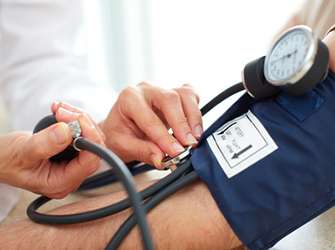Higher risk of high blood pressure for socially disadvantaged

The risk of high blood pressure is clearly related to social status. These are the findings of Anita Rieder and Thomas Dorner from the Institute of Social Medicine within the Centre for Public Health at the MedUni Vienna in the run-up to the forthcoming World Hypertension Day on 14 May 2014. A low income, a lover level of education, the type of profession performed, but also a migration background, are all risk factors that again primarily effect women.
In a recent study of the socio-demographic aspects of hypertension, the experts in social medicine used international and national data to conclude that, in the context of hypertension and its treatment, variables such as education, income, employment, professional status and migration background increase the risk of developing the condition. At the same time, existing hypertension in people who have these risk factors is more difficult to control, and target levels are achieved less often. Age, even though it increases the risk of hypertension overall, does not play a role here.
"One of the causes is that people of a lower socio-economic status are more prone to a gratification crisis", says Dorner. A gratification crisis occurs if someone gives their very best, but in their view is not compensated adequately enough, if their own efforts in the form of dedication, knowledge, but also time and personal skills, are not rewarded with appropriate compensation in the form of social recognition, job security, career opportunities or influence.
There is also a direct relationship between social status and health behaviour, says Rieder. "A higher income means finding it easier to make lifestyle choices and a higher education means you are more likely to live a healthier lifestyle." These differences in socio-economic status also lead to different uptakes of health services, such as the utilisation of screening opportunities, but also additional insurance. Not only can social factors influence health conditions, but the same is true in reverse: "A lower social status can be a consequence of poor health. Illness can therefore lead to disadvantages in terms of education and career opportunities," explains Dorner.
Hypertension more common in eastern Austria
The experts from the MedUni Vienna also discovered that there is an east/west discrepancy in Austria when it comes to hypertension, just like diabetes and obesity. In eastern Austria, 20.1 per cent of men and 25.5 per cent of women report that they have high blood pressure, while in western Austria this is the case for only 16.6 per cent of men and 19.4 per cent of women.

















